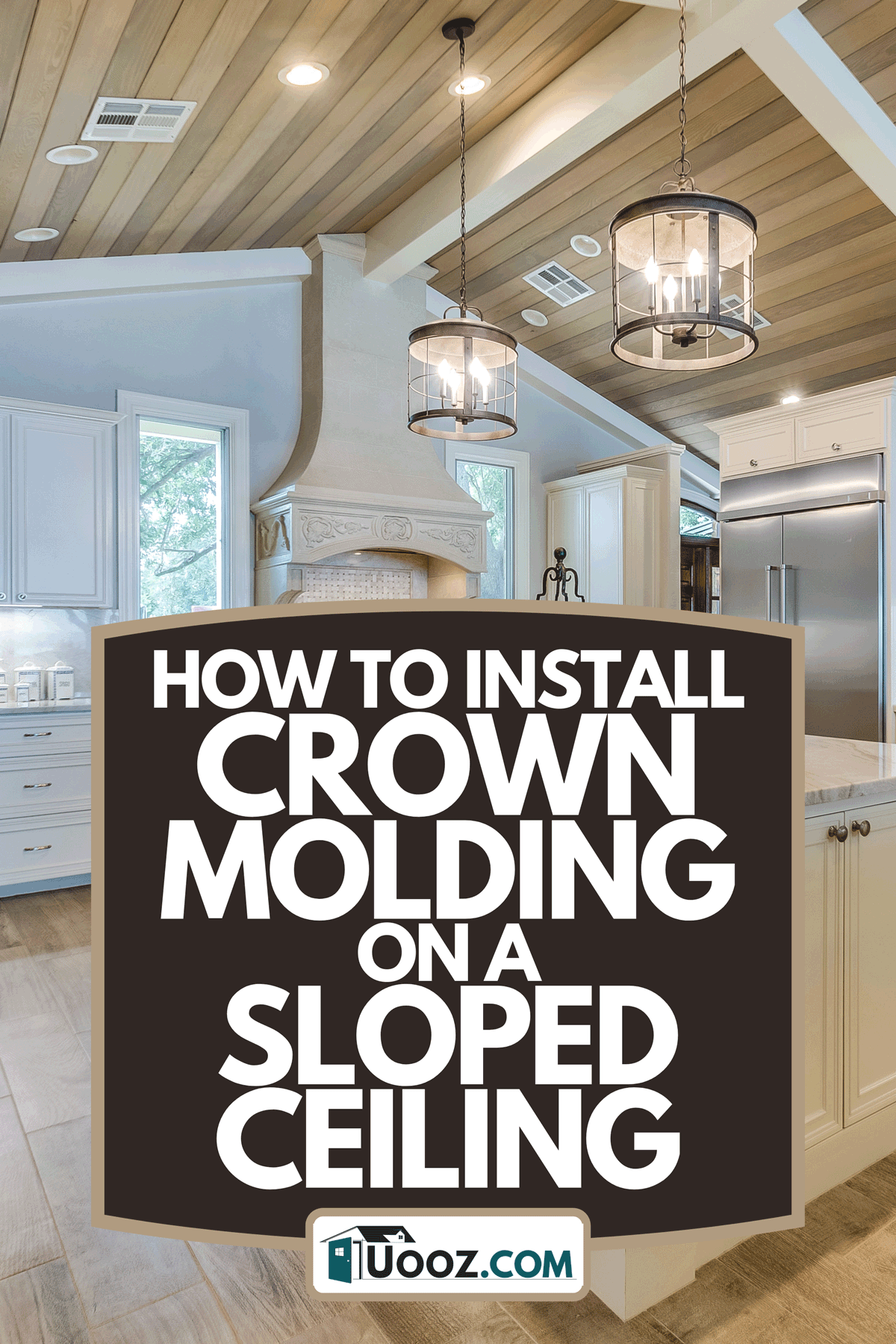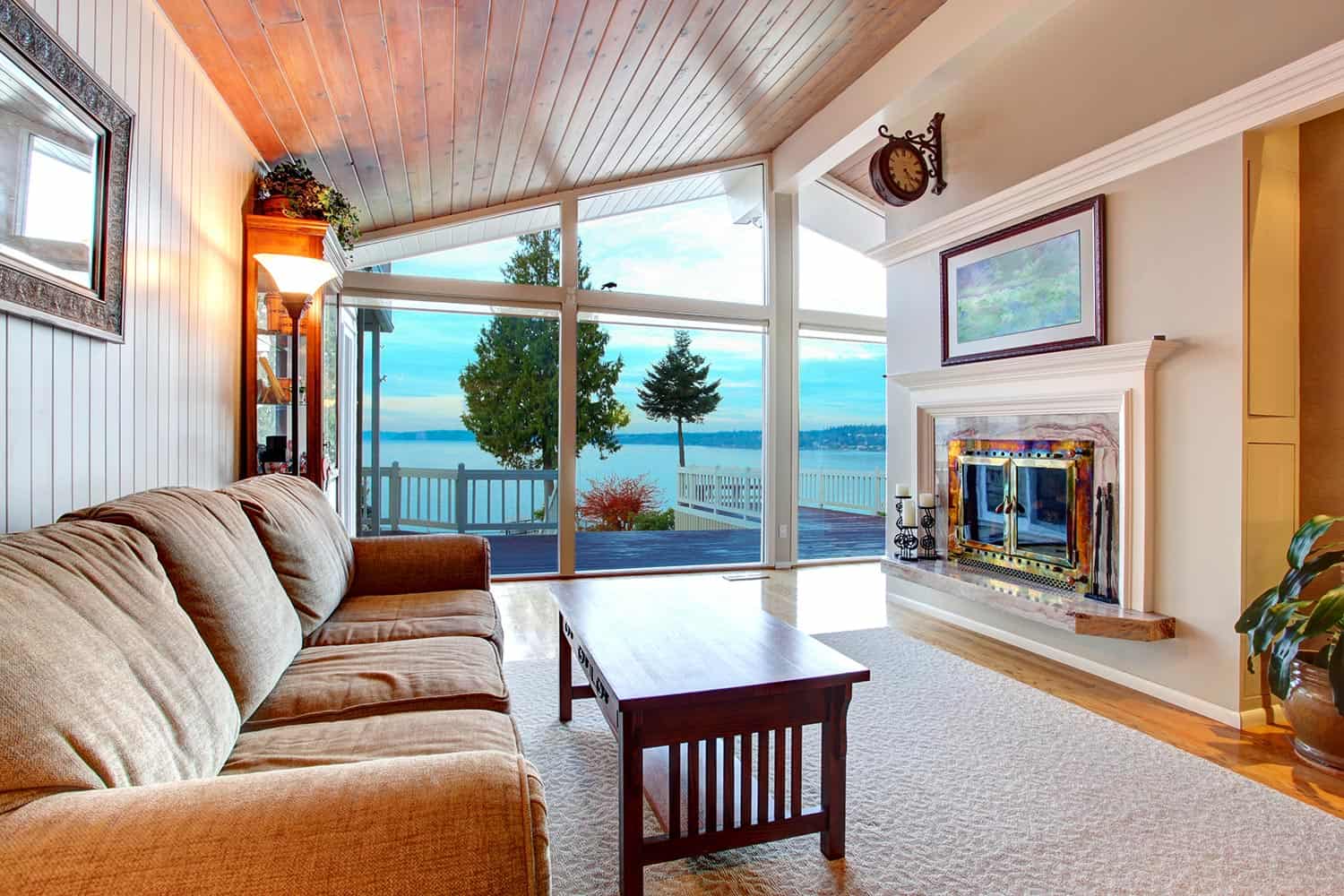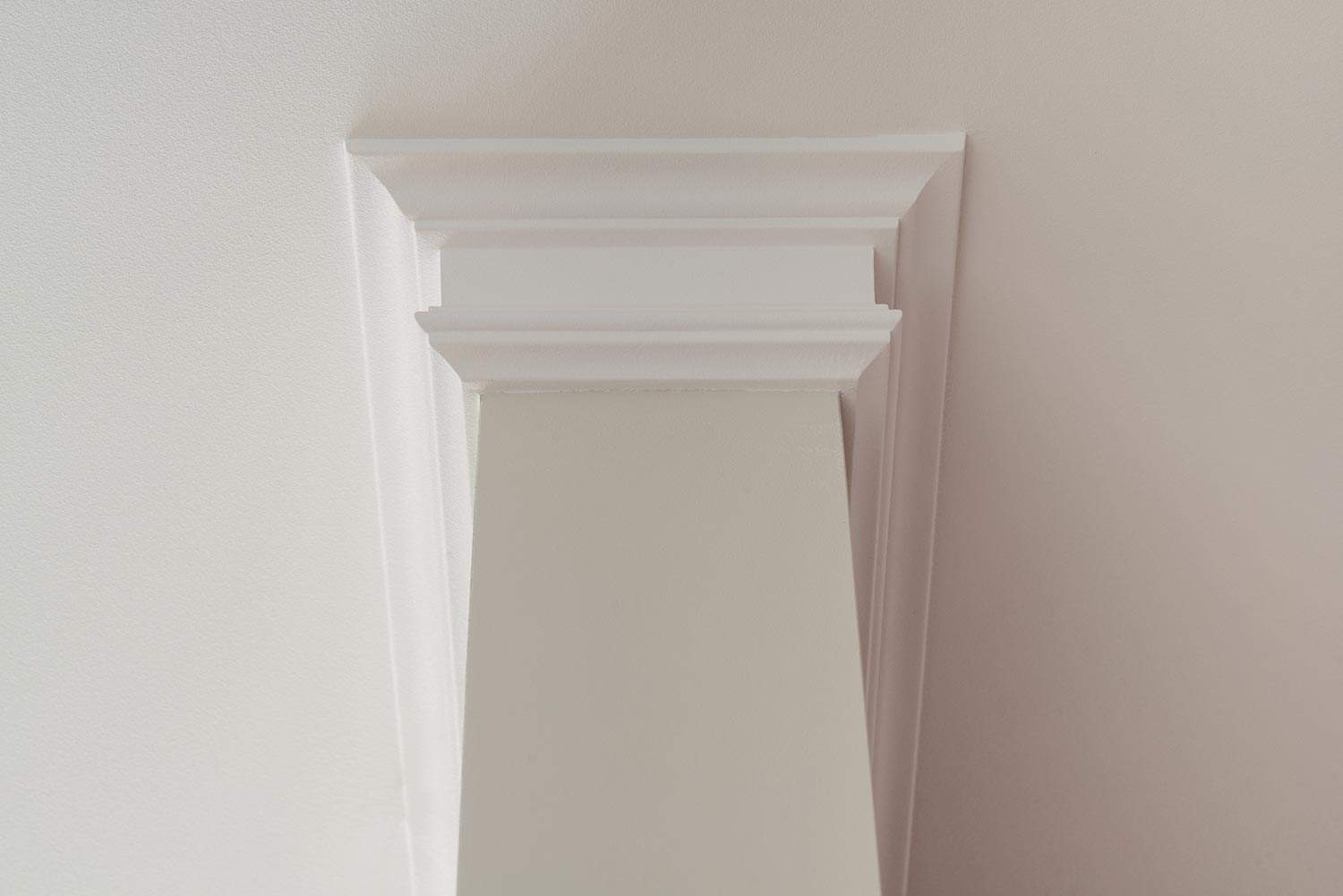Sloped ceilings add height and elegance to the average room. It isn't easy to finish these walls with crown molding, though, due to their aforementioned slope. If you're after that finished look, then how do you install crown molding on a sloped ceiling? We've thoroughly reviewed the process for you.
You can install crown molding on a sloped ceiling by calculating the slope and cutting your molding at an angle. Local professionals can also take on the challenge of crown molding installation for you.
The installation method that suits you best will depend both on the tools you have available and your experience with DIY installations. No matter how skilled you are at home renovation, it's in your best interest to experiment with your molding before you begin the installation process properly. Once you've got your math worked out, though, the process can be easier than it seems. Keep reading to learn more!

How to Install Crown Molding on a Sloped Ceiling
Sloped ceilings are beautiful if difficult to finish properly. If you want to install crown molding on your sloped ceiling, you'll want to take the following steps:
Calculate the Slope of Your Ceiling

To install your crown molding, you need to know what angle you have to cut it on. To get this number, you need to calculate the slope of your ceiling. You can do this with the help of an online slope calculator or with a traditional math formula.
To hand-calculate the slope of your ceiling, you'll need:
- The height of your walls
- The height of your ceiling at its highest point
- The distance between the top of your walls and the highest point of your ceiling (ceiling length)
Plug these variables into the following formula, and you'll have the slope of your ceiling:
(Ceiling height - wall height)/length of your ceiling = your ceiling's slope.
Prepare Your Miter Saw
Once you know what your ceiling's slope is, you can cut that slope into your available crown molding. The easiest way to do this is to use a miter saw. Mark out your cuts ahead of time, then safely set up your saw in a well-ventilated, kid-free area.
Experiment With Your Cuts
It's in your best interest to purchase a little more crown mold material than you might under normal circumstances. Cutting crown molding for a sloped ceiling takes a considerable amount of practice. As such, you can use the calculated slope of your ceiling to determine what your molding's miter cuts should look like. With those calculations in mind, you can practice your cuts on your spare materials.
Once you feel confident in the alignment of your extra material, you can repeat your miter cuts on the remaining crown molding.
Secure Your Backer Board and Molding
Once you've completed all of your cuts, it's time to install. Fit the back of your molding with backer board or similar material, including wood putty or paintable caulk, and fit the moldings just beneath your ceiling. The molding should touch your ceiling's edge but not overlap with it unless its design indicates otherwise)
Does Crown Molding Have to Touch the Ceiling?
When you install crown molding, it's in your best interest to keep it as close to your ceiling as possible. A tight fit between a ceiling and your molding allows for a more professional look. Similarly, that tight fight ensures that your crown molding is less likely to slip away from the ceiling in the months and years to come.
During the installation process, you want the molding just barely beneath the curve of a ceiling. Molding that overlaps with a curved ceiling when it wasn't designed to can often look as though it's been unprofessionally installed. That not-quite-right look can subsequently negatively affect your home's overall value.
However, there are types of molding that are meant to come into direct contact with your ceiling - so do your research ahead of time to determine just how much of an overlap, if any, there should be.
What is the Going Rate for Installing Crown Molding?
Installing crown molding can cost between $300 and $800 per room and upwards of $3,000 for an entire home. The cost of crown molding installation varies based on a few different factors. These include:
The Type of Molding You Want

There's more than one type of crown molding that you can install against a curved ceiling. The most common crown molding materials include:
- Plaster
- Wood
- Medium-Density Fiberboard
- Polyurethane
- PVC
- Flex
- Polystyrene
The cost of your crown molding will subsequently depend on which of these materials you want to finish off your home's look. What's more, you can expect the price of your preferred crown molding to fluctuate based on how complex the molding's design is.
Professional vs. DIY Services
If you want to get the most ROI out of your crown molding installation, you may consider forgoing a professional installation altogether. Even when installing crown molding on a curved ceiling, ambitious homeowners can make a DIY job look like it was completed by experts.
That said, there are benefits to working with professional renovators in your area. Professional teams can take on a lot of an installation's math for you, saving you time and stress as you try to fit your molding to a curved ceiling. What's more, these teams can install your molding while you're at work, helping you keep your busy schedule a little less hectic.
At the end of the day, however, professional installation services are going to cost more than DIY installation services. When you pay for professional crown molding installation, you have to cover both the cost of materials and the cost of an expert team's labor. When you DIY your molding installation, you only have to pay for your materials.
Does Crown Molding Add Value to a Home?
Whether or not crown molding impacts the value of your home depends almost entirely on the quality of its installation. Poorly installed crown molding, for example, can detract from a home's finer points. The same can be said of crown molding that appears to be cheap or damaged.
However, crown molding that is properly installed, well cared for, and appears to be in good condition can have a significant, positive impact on your home's value. Most of the time, you can make back the money you spent on your installation and more, provided you've kept up with your home maintenance over the years.
Note that crown molding has different effects on your home's value based on where in your home it's installed. Bathroom crown molding, for example, is more likely to go unnoticed than crown molding in your dining room. With that in mind, keep crown molding to your most-traveled rooms, and you'll see its greatest impact on your home's market value.
Do You Have to Put Crown Molding in Every Room?
Crown molding makes your ceiling look finished. That said, you do not have to install crown molding in every room. While you can install molding throughout your home, you can also save it for the rooms that you know guests will most frequently travel. That way, you can enjoy the way your molding looks without spending days installing it throughout the whole of your home.
Crown molding can also be sensitive to changes in humidity. As such, it may not be the ideal addition to your bathroom or basement. Be sure to research the kind of molding you want to install as well as the materials you use to affix said molding to your ceiling. If you are installing molding in a temperature-sensitive part of your home, you'll also want to install waterproofing measures at the same time.
DIY vs. Professional Crown Molding Installation
The do-it-yourself mindset is supposed to help homeowners save money on their home renovations. While this process can be budget-friendly under the right conditions, it's not always your best option. This is especially the case when it comes to the installation of crown molding on a sloped ceiling.
You can always try to install crown molding on a sloped ceiling yourself. This work, however, requires you to do a lot of math and experimentation ahead of time. If you're concerned about your budget, you may want to contrast the cost of your materials and time against the work professionals in your area can do.
Area professionals can take on the stress of crown molding installation while you work, take care of the kids, or finish other home renovations. While you'll have less control over the work that's being done, you can also avoid the tricky math problems that might otherwise whittle away at your renovation budget.
Lift Your Home's Look With Crown Molding
Expertly installed crown molding finishes off the look of any ceiling. If there's a particular mold that you're fond of, don't let your ceiling's slope keep you from renovating. So long as you do your math and have the right tools on hand, you can install crown molding on a sloped ceiling in no time at all.
